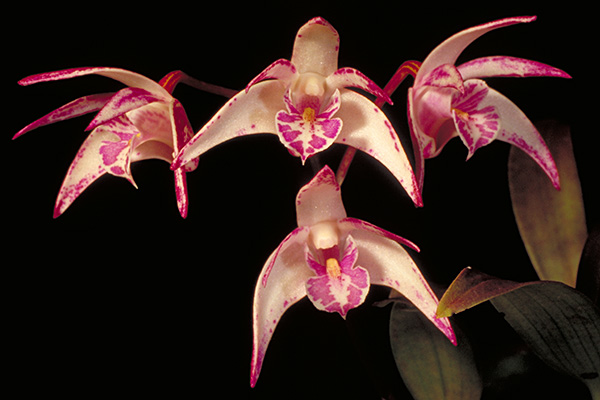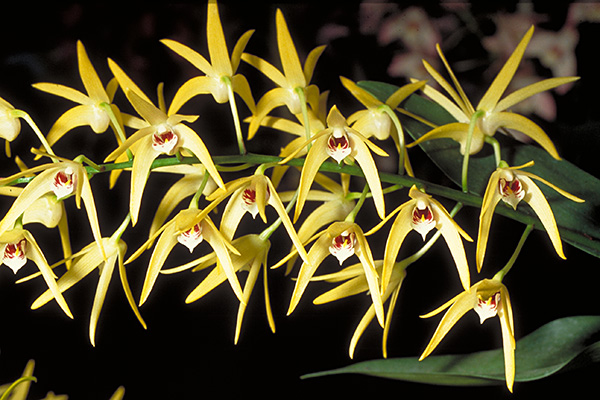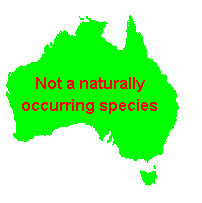General Description:
Dendrobium is a large genus with around 1400 species spread throughout Asia and the Pacific. Australia has about 56 species, many of which are cultivated. Considerable hybridization has been carried out within the genus to produce improved horticultural forms and a number of naturally occurring hybrids are also in cultivation.
Major taxonomic revision of the Dendrobium group has occurred in recent years with many species being transferred to new genera. Some of these changes have been reasonably widely accepted (eg Dockrillia) while the status of others is less certain. Dendrobium is retained as the generic name here until the taxonomic situation becomes more clear.
Many natural hybrids between orchid species occur both in Australia and overseas – Dendrobium x delicatum is one well known Australian example. In hybridisation, however, nature is no match for the enthusiastic orchid grower. Among the exotic orchids there are literally thousands of registered hybrids, many being complex crosses between different genera or between previously developed hybrids.
In Australia, hybridisation has resulted in numerous new cultivars in recent decades, mainly in the genus Dendrobium. Registered hybrids based on Australian dendrobiums now number in the hundreds.
Examples of a fairly early Australian Dendrobium hybrids are D.’Bardo Rose’ (a D.falcorostrum x D.kingianum hybrid) and D. ‘Hilda Poxon’ (D.speciosum x D.tetragonum), the latter having a beautiful golden flower with a red, spotted labellum (see photo below). These are relatively simple crosses but much more complex hybrids have been developed subsequently, such as combining warm and cool growing species to produce large flowered cultivars that will grow in cooler areas.
Selection of hybrids can be a little frustrating for the beginner as quality, flowering size divisions are not readily available. Hybrid seedlings, usually in 50 mm tubes, are easier to obtain. However, these are “un-flowered” crosses and there can be a degree of “pot luck” involved due to genetic variation inherent in seedlings. Generally growers will be only too pleased to advise on the expected flowering characteristics of a hybrid seedling. It’s also advisable to note the parentage of any hybrid that appeals to you. Then if you come across a seedling with the same parents, it will probably be worth a try. Examples of several attractive hybrids are shown in the accompanying photographs.
For further information on growing Australian native orchids, the Australasian Native Orchid Society is the place to go. This organisation caters for all levels of expertise and publishes an excellent quarterly journal, “The Orchadian”. There are district groups in many parts of Australia. Further information can be found on the ANOS website.

Dendrobium ‘Hilda Poxon’
Photo: Brian Walters

Dendrobium ‘Lipstick’
Photo: Brian Walters

Dendrobium ‘Star Delight’
Photo: Brian Walters
Other Native Plant Profiles
 Australian Native Plants Society (Australia)
Australian Native Plants Society (Australia)